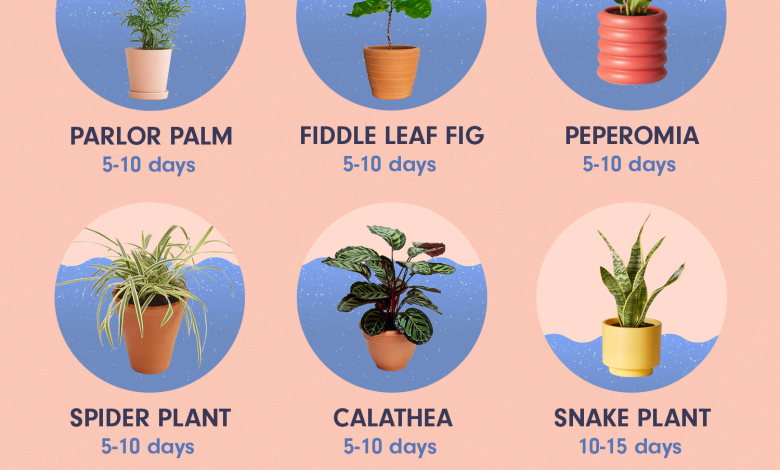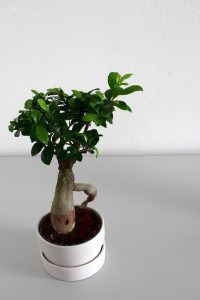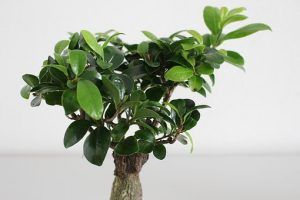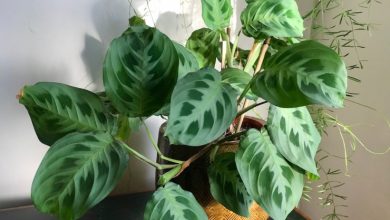How often and how to water my Ficus in a pot?

 The species that belong to the ficus family are well known and used for interior decoration.
The species that belong to the ficus family are well known and used for interior decoration.
For this reason, doubts about watering potted ficuses are quite common and, sometimes, it is one of the cares that is not applied as it should.
The different ficus varieties have their own demands on the subject of humidity.
However, here we will deal with the most general points that revolve around this matter and that will help you a lot to apply it safely.
Important points when watering a potted ficus:
- Irrigation frequency: for summer days, a weekly watering will suffice. In winter, watering can be spaced to one every two weeks.
- Irrigation method: with the use of a gardening watering can.
- Optimum time of day for irrigation: in the morning.
- Identify excess water: yellow leaves that end up falling, roots that drown, death of the plant.
- Identify lack of water: leaves that fall while green, yellow or brown edges.
What watering needs does the potted ficus have?
Ficus are not particularly demanding when it comes to watering because they prefer a rather warm climate. They will be more than satisfied with having a slightly moist substrate, although on the contrary, abundant watering that promotes waterlogging could be fatal.

These are easy plants to care for and maintain, but if you don’t pay attention to watering, they could give you very unpleasant surprises.
How can we detect the lack of irrigation in the potted ficus?
 The good news is that most ficus species are fairly tolerant to occasional droughts.
The good news is that most ficus species are fairly tolerant to occasional droughts.
When you notice that the leaves begin to wrinkle a little and fall while still green, it may be receiving too little water.
On some occasions, you can see the edges of the leaves drying up, turning brown or yellow.
How often should we water the potted ficus?
Establishing irrigation frequencies is a very wise action for any plant caretaker because it helps to be organized and dedicate the right time to them. It also prevents plants from suffering from a lack or excess of irrigation, which has specific consequences for each species.
For potted ficus, watering can be established on a weekly basis during the summer season and fortnightly during the winter season.In both cases, you must take into account the specific conditions of your home, as there are external factors that intervene in the time of water evaporation.

The most usual thing is to touch the soil before any irrigation to verify that it is already dry and available for a new moisture cycle. To complement the irrigation cycle, the ficus does very well spraying its leaves a couple of times a week.
What is the best way to water potted ficus?
The most profitable watering for potted ficus is through the use of a gardening watering can. This should have an appropriate number of holes through which the water will drain, ensuring that they are not too large so that the flow is slow.

Try to do the irrigation at a slightly inclined angle so that you pour the water in a longer cycle of time. This will help the substrate gradually absorb the water and prevent waterlogging on the surface.
When this happens it can cause problems of lack of irrigation, because you will come to think that it already has enough water and it may not be so.Ideally, you should apply water until it begins to come out of the drainage holes at the base of the pot, using a plate with pebbles to collect the excess.


Thanks to the pebbles, you will create a separation between the collected water and the roots of the plant to prevent excess. Do not forget to remove that water at the end of the process because you do not want to leave anything stagnant that can give rise to pests or diseases.
How do we detect excess water in potted ficus?
Excess water will cause a yellow coloration in the leaves, as if it were chlorosis.Afterward, these leaves will undoubtedly drop from the plant, creating sad defoliation.
Bad conditions will also occur in the roots, as they will be subjected to an amount of moisture that they are not capable of processing. This can affect their ability to breathe or, in the worst case, make them vulnerable to attack by viruses, fungi or bacteria.

Keep in mind that a ficus plant subjected to excess water could die quickly because they are intolerant to this condition. Any space will look even better when decorated with a plant from the ficus family. Just pick your favorite and get ready to give her lots of love.
Maybe you are also interested in:
- How often and how to water my Bonsai Ficus?
- How to Fertilize a Ficus: The Complete Guide – Sembrar100
- Ficus Bonsai Care: [Earth, Strengthening, Humidity and Pruning]
- Ficus Benjamina: [Planting, Care, Irrigation, Substrate and Characteristics]
- Rubber tree or Ficus Elastica: [Planting, Care, Substrate and Irrigation]
- Prune Ficus Ginseng: [Importance, Time, Tools, Considerations and Steps]



![Photo of Ghost Pepper: [Characteristics, Cultivation, Care and Disadvantages]](https://www.complete-gardening.com/wp-content/uploads/2022/08/ghost-pepper-characteristics-cultivation-care-and-disadvantages-390x220.jpg)
